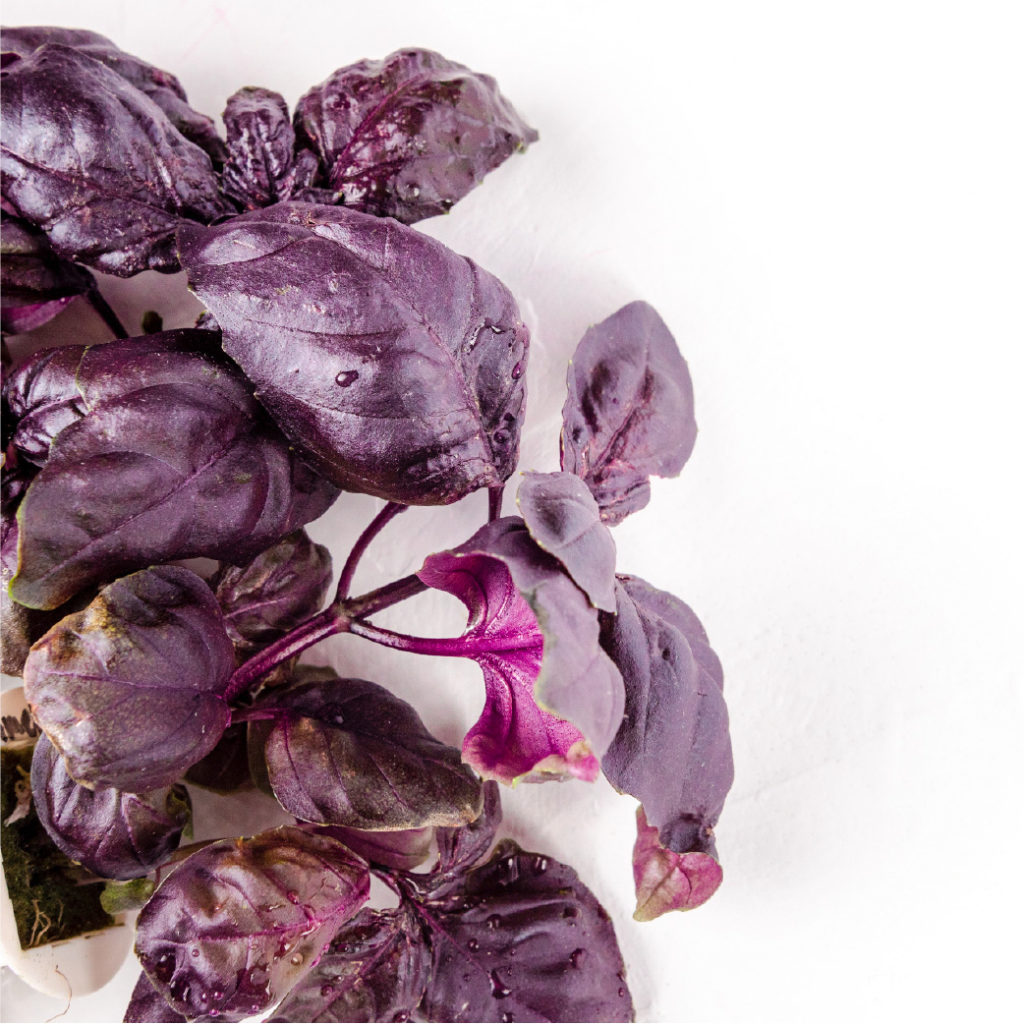Purple Basil
Latin name: Ocimum basilicum
🌱 Days to Sprout: 5-10
😋 Ready for Full Dose of plant food with true leaves or roots .5-inch long
✂️ Thin to: 3 plants per yCube
🍅 Days to Maturity: 72
💡 Light Zone: Medium
📏 Plant Size: 1 ft
💚 Care Level: Beginner
Origin
Purple Basil is a relatively new plant, cultivated in the last 100 years from wild basil plants. Scientists who planted the seeds selected one dark, purple basil plant that grew amongst the seedlings which was further bred and developed into the Purple Basil we love today.
Qualities
This variety looks similar in shape to Italian basil but displays a deep purple, almost black color. These pigments are caused by high concentrations of compounds called anthocyanins, which have antioxidant properties. Purple Basil is a great source of vitamin K, which plays a role in wound healing, vitamin C, which helps strengthen the immune system, and beta-carotene, a compound that is converted into vitamin A and helps maintain optimal organ functioning.
Use
Use Purple Basil as a fun, colorful substitution for Italian Basil. Use it as a topping for pizza or pasta, as the main ingredient to make purple pesto, or chopped and added to salads. If you’re growing strawberries, enjoy two two together for a complex and wonderful flavor combination. Basil’s primary flavor is anise or sweet licorice.
Care & Harvest
💡Temperature: Prefers warmer temperatures (70-85°F).
✂️ Pruning: Remove leaves with brown spots if they appear. Check the roots monthly and trim any that are brown or extending past the yPod. For bushier growth, regularly harvest at the stem above the growth nodes (see Harvest below). To delay bolting, pinch off flower buds as they appear.
🔎 Plant Health: Aphids are a common pest, but you can use our prevention and treatment tricks to keep pests at bay! Root rot and Downy Mildew are also common diseases best controlled by regular root checks and removing any leaves with brown spots as they appear.
🌿 Harvest: Harvesting frequently helps prolong the plant's life. Pinch off individual leaves, or use clean shears to cut stems above growth nodes. Find growth nodes just above the two largest leaves on a stem. You should see another, small set of leaves or knobs (nodes) growing between the stem and larger set of leaves. Cut the stem 1/4-1/2″ above the nodes and watch the small leaves grow large!
Harvest to Plate Recipe
Basil-Walnut Pesto
Recipe Source: Whatsoeverish
Ingredients
1/2 cup extra virgin olive oil (EVOO)
1/2 cup grated Parmesan cheese
3 cloves garlic unpeeled
2 cups fresh basil leaves (mix any varieties you're growing!)
1/4 cup walnuts
1 teaspoon red chili pepper flakes
1/2 teaspoon kosher salt
Instructions
Remove stems, wash and dry the basil leaves.
Grate the Parmesan cheese, if necessary.
Pulse walnuts in a food processor.
Add the olive oil, Parmesan cheese, garlic cloves, and basil.
Blend until completely smooth.
Enjoy immediately, or store in jars of your choice! Pesto is also freezer-friendly.
Our Plant Health & Nutrition Team thoroughly tests each variety we offer to bring you the most flavorful and high-quality plants. We regularly rotate our plant portfolio, so please note, availability varies.

